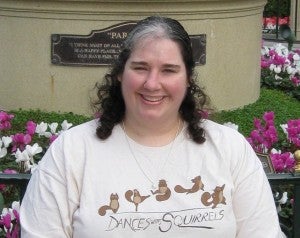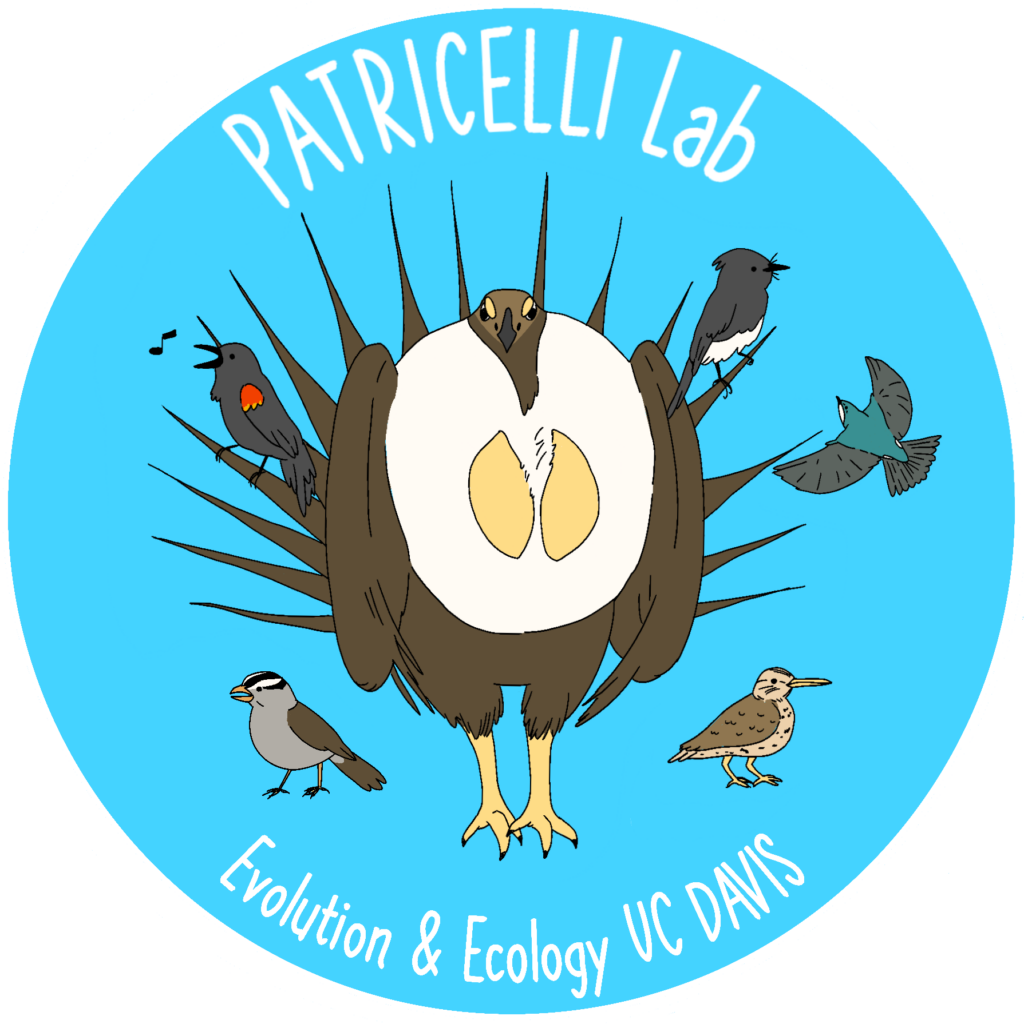Stacie Hooper received her PhD in Ecology at UC Davis in 2010. Stacie has been a visiting assistant professor at University of the Pacific since fall 2015.
Stacie’s research applies an understanding of vocal communication to wildlife conservation. Her dissertation work involved using information theory and neural networks to identify and quantify the information contained in ground squirrel alarm calls (Spermophilus lateralis and Spermophilus beldingi). Information contained in animal signals, such as the caller’s age or individual identity, can provide additional information about wildlife populations to managers and conservationists.
Stacie’s research in the Patricelli Lab involves measuring the impacts of human-generated noise on communication, and assessing the ability of species to compensate for these impacts. Stacie’s work as a postdoctoral scholar in the Patricelli lab involves developing a spatially explicit computer model to simulate how noise from energy development spreads across the landscape. Greater sage-grouse appear to be declining in areas near natural gas extraction sites and this model will help us to understand whether noise has played a significant role in these reductions relative to other factors and help us determine the threshold at which impact occurs. Read more about this project here.
Links
Stacie’s ResearchGate page: https://www.researchgate.net/profile/Stacie_Hooper
Stacie’s Publications
Gubbins, C. M., McCowan, B., Lynn, S., Hooper, S.L. & Reiss, D. 1999. Developmental changes in mother-infant spatial relations in captive bottlenose dolphins (Tursiops truncatus). Marine Mammal Science, 15: 751-765. PDF
McCowan, B. & Hooper, S.L. 2002. Individual acoustic variation in Belding’s ground squirrel alarm chirps in the High Sierra Nevada. Journal of the Acoustical Society of America, 111: 1-4. PDF
Rabin, L.A., McCowan, B., Hooper, S.L. & Owings, D.H. 2003. Anthropogenic noise and its effect on animal communication: an interface between comparative psychology and conservation biology. International Journal of Comparative Psychology, 16: 172-192. PDF
Randall, J., Collins, K., McCowan, B., Hooper, S.L. & Rogovin, K. 2005. Alarm signals of the great gerbil: acoustic variation by predator context, sex, age, individual and family group. Journal of the Acoustical Society of America, 118: 1-9. PDF
Hooper, S.L., Reiss, D., Carter, M.R. & McCowan, B. 2006. Importance of contextual saliency on vocal imitation by bottlenose dolphins. International Journal of Comparative Psychology, 19: 116-128. PDF
Pandolfino, E., Herzog, M., Hooper, S.L., & Smith, Z. 2011. Winter habitat associations of diurnal raptors in California’s Central Valley. Western Birds, 42(2): 62-84. PDF
VanderWaal, K., Atwill, E., Hooper, S.L., Buckle, K., & McCowan, B. 2013. Network structure and prevalence of Cryptosporidium in Belding’s ground squirrels. Behavioral Ecology and Sociobiology, 1-9. PDF
Patricelli, G.L., Blickley, J.L., & Hooper, S.L. 2013. Recommended strategies to limit anthropogenic noise impacts on greater sage-grouse in Wyoming. Journal of Wildlife-Human Interactions, 7(2), 114-133. PDF
Back to the Postdocs page

